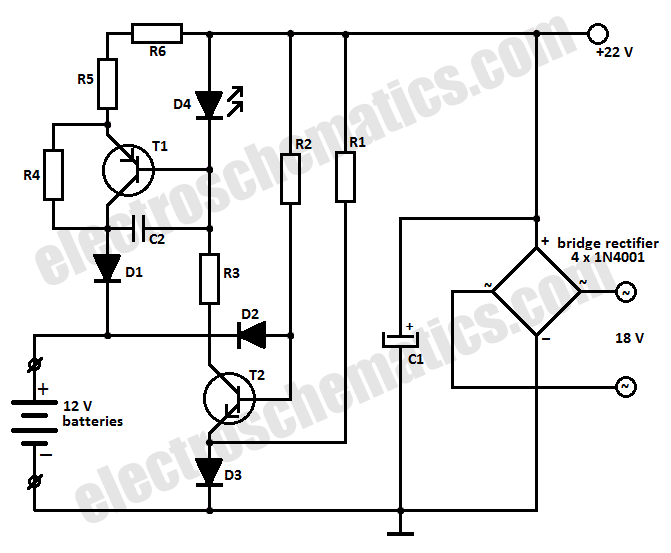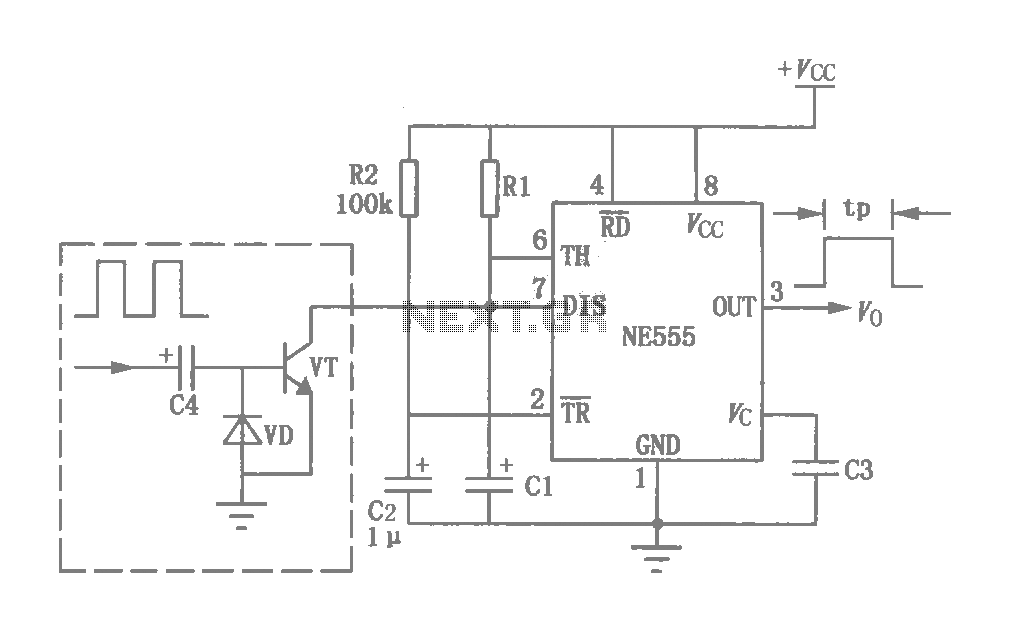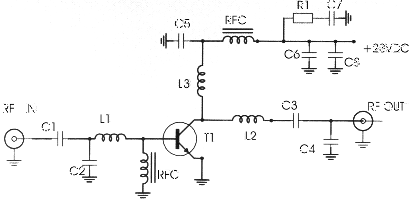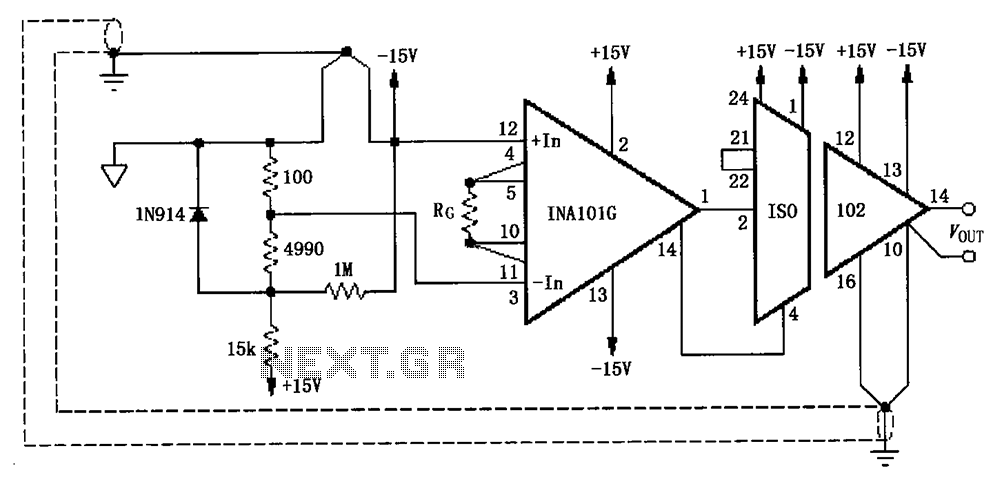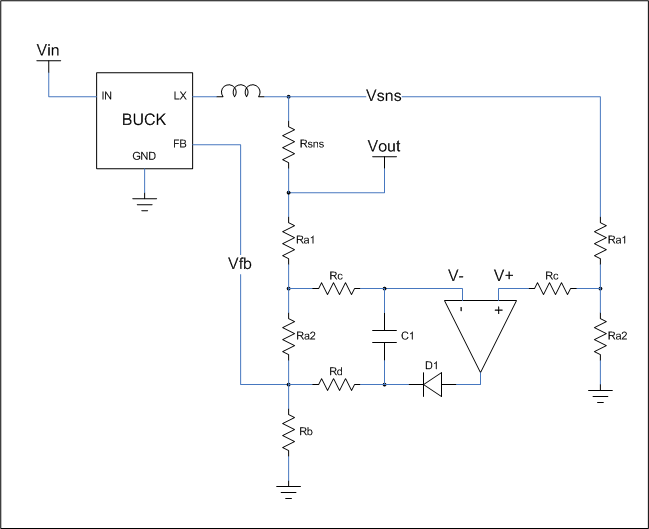
Basic circuit diagram connection of signal and power ISO107
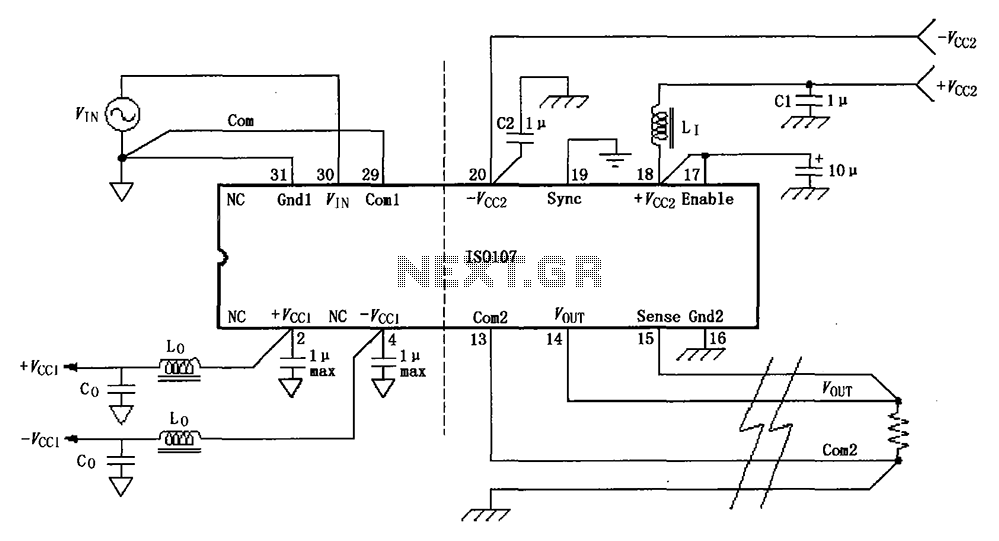
The basic connection circuit for the ISO107 signal and power supply is illustrated. Each power supply terminal must include a bypass filter. If the output current from the isolated power supply exceeds 15 mA, it is advisable to utilize an external filter for the +Vcc2 pin. The recommended values for the inductor (Lo) are 10 µH and for the capacitor (Co) are between 0.1 µF and 10 pF. Com1 is connected to the signal source, while Com2 is connected to the load (RL). The Sense line should be connected to the upper end of the load to minimize errors caused by voltage drops due to long wire runs. Gnd1 is connected to Com1, and Gnd2 is connected to Com2. The Vout Sense and photogenic receptacle connector are also included in this configuration.
The ISO107 is an isolated signal and power supply interface that requires careful attention to bypassing and load connections to ensure optimal performance. Each power supply terminal must be equipped with a bypass filter to stabilize the voltage and reduce noise. For applications where the output current exceeds 15 mA, an external filter should be connected to the +Vcc2 pin to enhance the power supply's stability. The suggested values for the inductor (Lo) at 10 µH and capacitor (Co) ranging from 0.1 µF to 10 pF are critical for filtering high-frequency noise and maintaining signal integrity.
In the schematic, Com1 serves as the connection point to the signal source, while Com2 connects to the load (RL). The Sense line is strategically placed at the upper end of the load to mitigate the impact of voltage drops that can occur due to long wire lengths. This configuration helps maintain accurate voltage readings and enhances the overall reliability of the circuit. Ground connections are also essential; Gnd1 is linked to Com1, and Gnd2 is connected to Com2, ensuring a common reference point for the circuit.
The output voltage sensing (Vout Sense) and the photogenic receptacle connector are integrated into the design, allowing for easy interfacing with external devices. Proper layout and component selection are vital to minimize parasitic inductance and capacitance, which can adversely affect the performance of the ISO107 circuit. Overall, this configuration provides a robust solution for isolated signal and power supply applications, ensuring minimal interference and maximum efficiency. As shown for the basic connection circuit ISO107 signal and power supply. Each power supply terminal must have a bypass filter. When isolated power supply output current is gre ater than 15mA, we recommend the use of such power pin of + Vcc2 pin external filter. Lo 10 H, Co is 0.1 ~ 10pF. Com1 feet to the signal source, Com2 connected to load RL, Sense then load the upper end, in order to reduce errors due to long wires cause a voltage drop caused by the transmission. Gnd1 connected to Com1, Gnd2 and Com2 connected, Vout Sense and photogenic receptacle connector.
The ISO107 is an isolated signal and power supply interface that requires careful attention to bypassing and load connections to ensure optimal performance. Each power supply terminal must be equipped with a bypass filter to stabilize the voltage and reduce noise. For applications where the output current exceeds 15 mA, an external filter should be connected to the +Vcc2 pin to enhance the power supply's stability. The suggested values for the inductor (Lo) at 10 µH and capacitor (Co) ranging from 0.1 µF to 10 pF are critical for filtering high-frequency noise and maintaining signal integrity.
In the schematic, Com1 serves as the connection point to the signal source, while Com2 connects to the load (RL). The Sense line is strategically placed at the upper end of the load to mitigate the impact of voltage drops that can occur due to long wire lengths. This configuration helps maintain accurate voltage readings and enhances the overall reliability of the circuit. Ground connections are also essential; Gnd1 is linked to Com1, and Gnd2 is connected to Com2, ensuring a common reference point for the circuit.
The output voltage sensing (Vout Sense) and the photogenic receptacle connector are integrated into the design, allowing for easy interfacing with external devices. Proper layout and component selection are vital to minimize parasitic inductance and capacitance, which can adversely affect the performance of the ISO107 circuit. Overall, this configuration provides a robust solution for isolated signal and power supply applications, ensuring minimal interference and maximum efficiency. As shown for the basic connection circuit ISO107 signal and power supply. Each power supply terminal must have a bypass filter. When isolated power supply output current is gre ater than 15mA, we recommend the use of such power pin of + Vcc2 pin external filter. Lo 10 H, Co is 0.1 ~ 10pF. Com1 feet to the signal source, Com2 connected to load RL, Sense then load the upper end, in order to reduce errors due to long wires cause a voltage drop caused by the transmission. Gnd1 connected to Com1, Gnd2 and Com2 connected, Vout Sense and photogenic receptacle connector.
